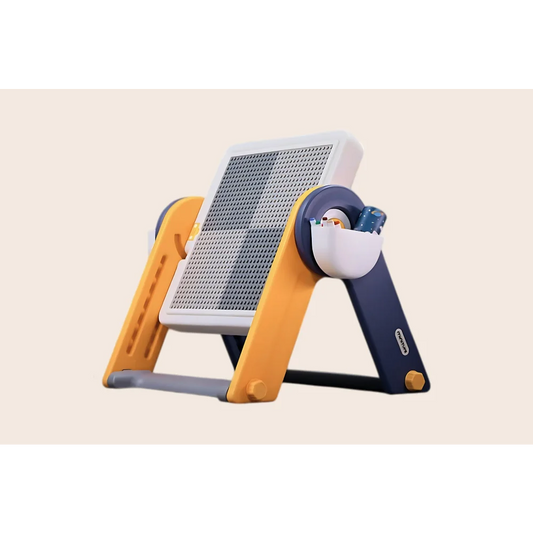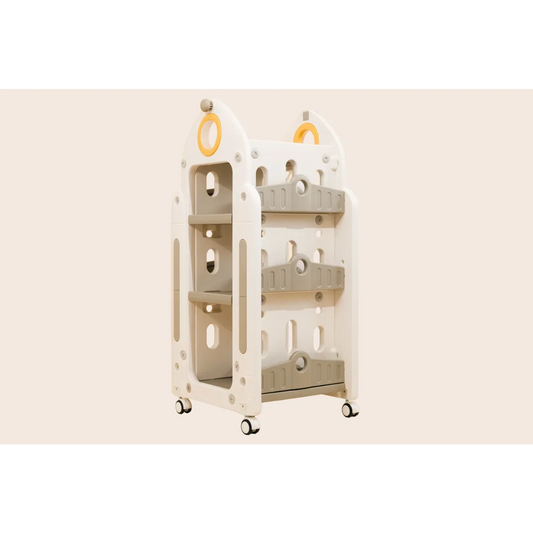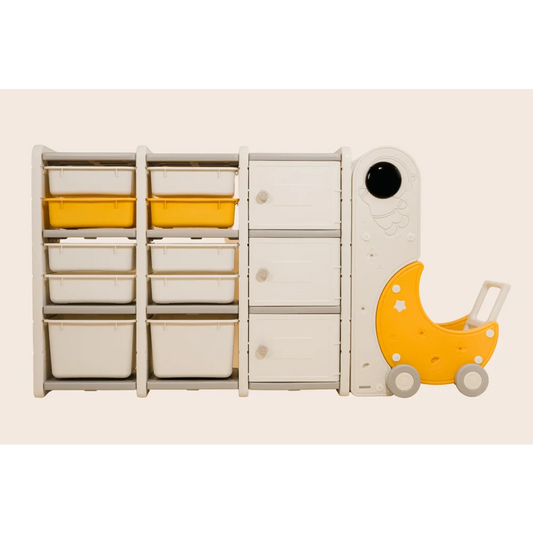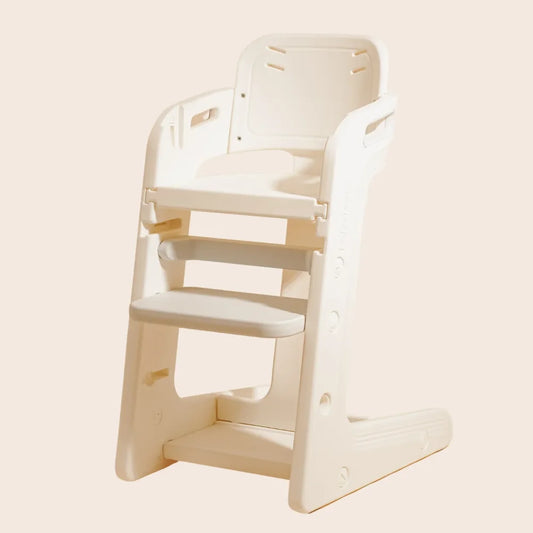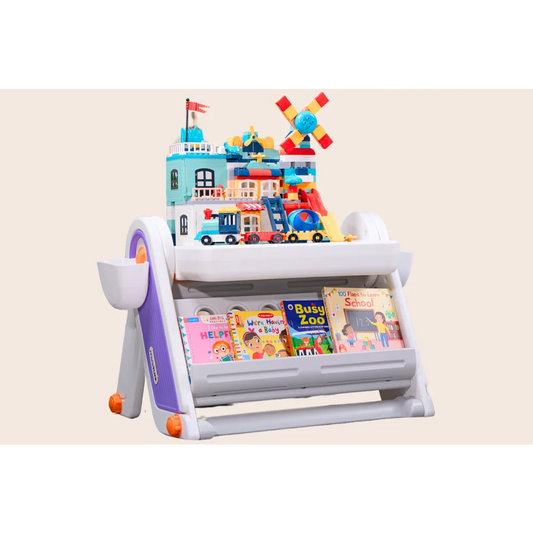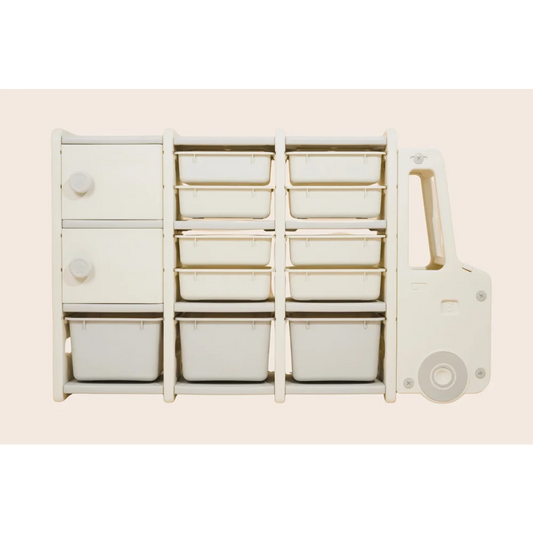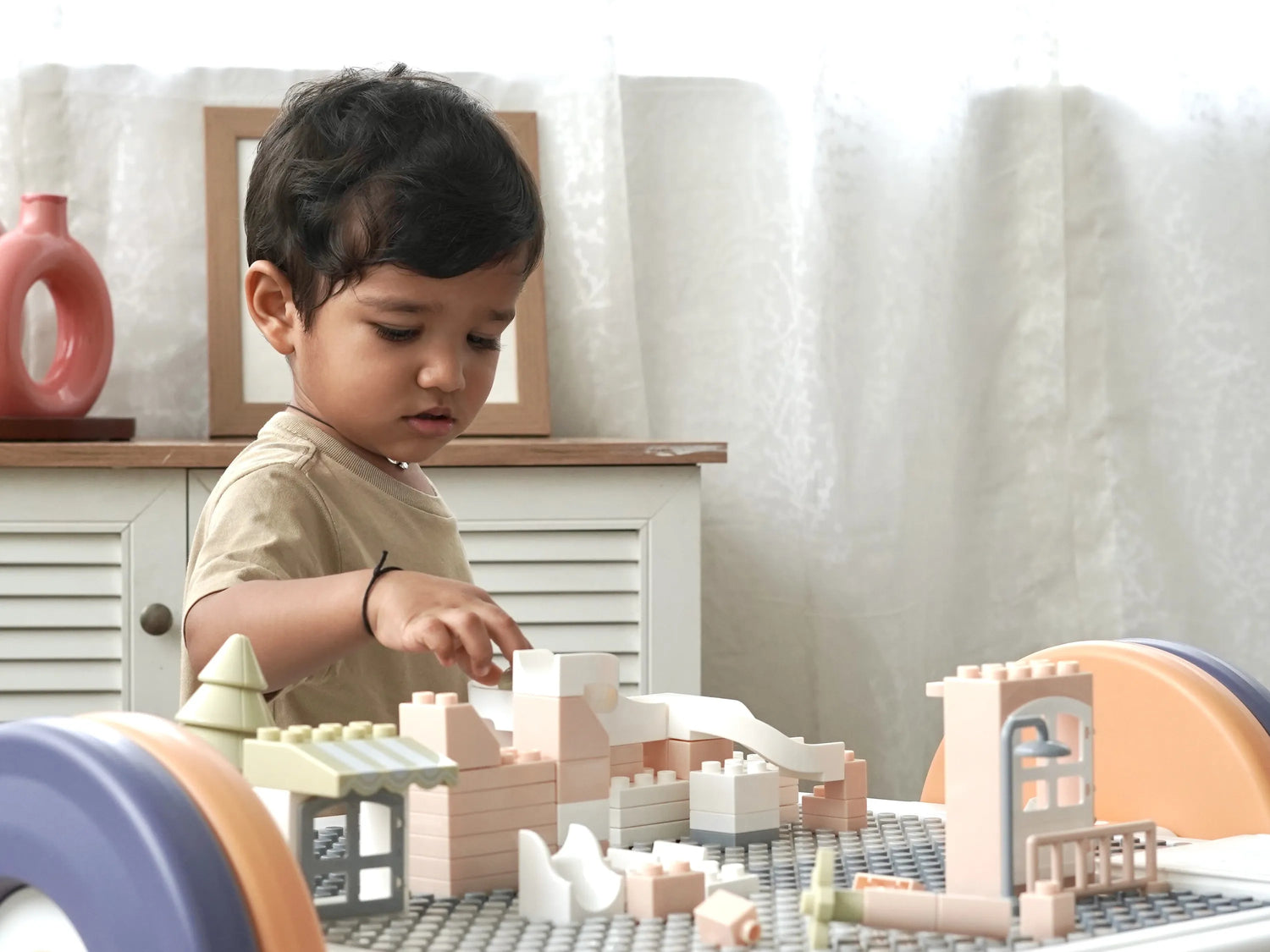
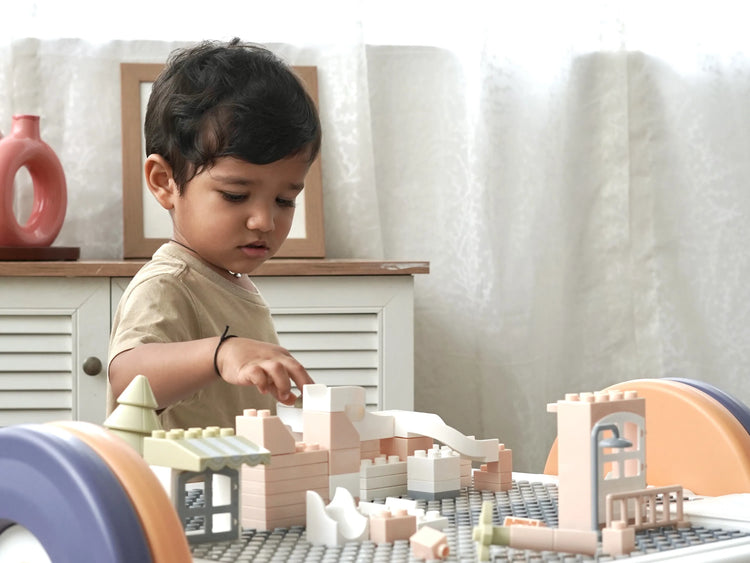
Why Toy Rotation Beats Toy Overload (and how to do it)
Why Toy Rotation Beats Toy Overload (and how to do it)
- By Sanaa Syed
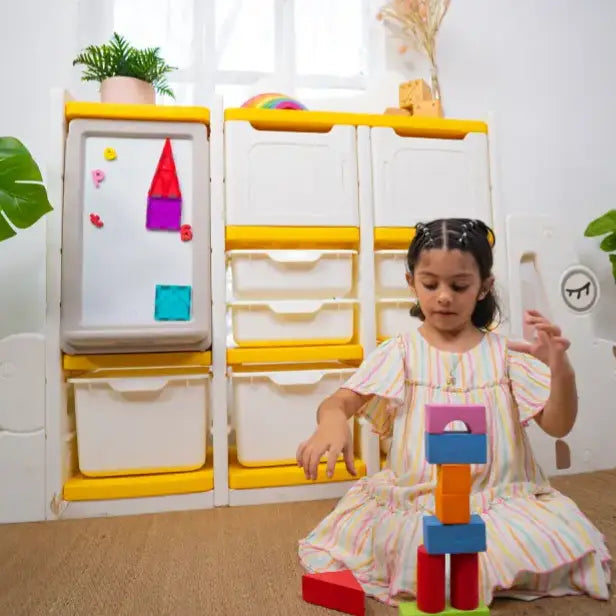
You step into the playroom, and it’s overflowing - trucks under the table, puzzle pieces behind the curtain, and dolls with missing shoes staring back at you from every corner. Still, your child looks around and sighs, “I’m bored.”
You’re not alone. Many parents wonder how a space packed with toys can feel so… uninspiring.
Why less is more when it comes to toys
Children don’t need more toys. They need the right toys at the right time. When everything is out at once, it can overwhelm their senses. They move from one thing to another without truly engaging, and before long, lose interest in it all.
Rotating toys - even just once every couple of weeks - keeps things fresh. It sparks curiosity. Familiar toys feel new again. And more importantly, your child learns to focus deeper and play longer.
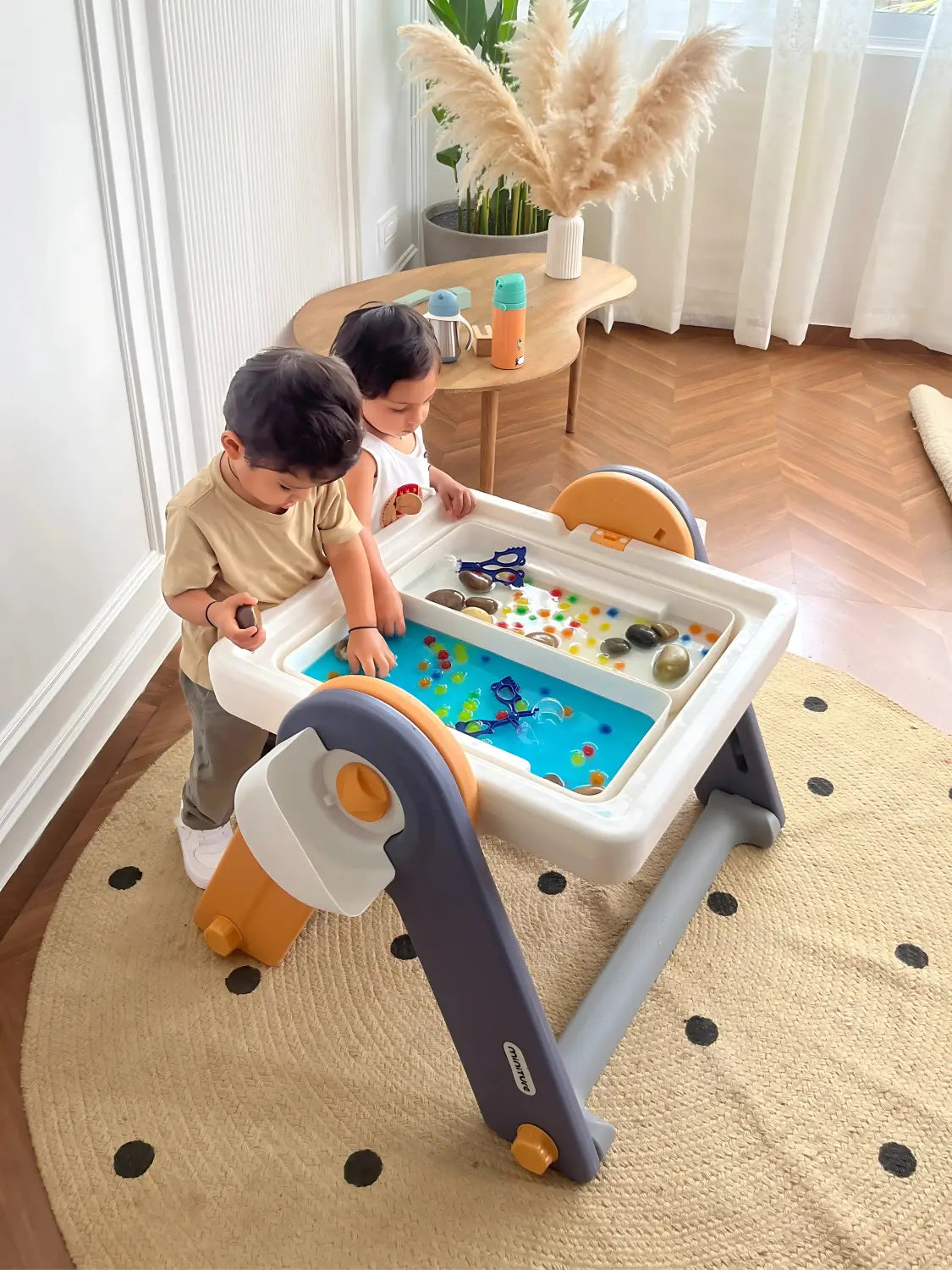
But won’t my child forget about the toys I pack away?
Actually, this is where the magic happens. That fire truck they haven’t seen in three weeks. The day it comes back feels like Christmas. It helps your child appreciate what they already own and gives them a sense of novelty, without needing to constantly introduce new items.
How often should I rotate toys?
There’s no strict rule. Some families swap things weekly; others do it monthly. You’ll notice when interest starts to fade - that’s your cue. Watch how your child plays. If the puzzles haven’t been touched all week, it might be time to tuck them away and bring out the animal figurines or sensory bins.
What if my child asks for a toy that’s stored away?
That’s okay. Toy rotation doesn’t mean hiding things with a lock and key. If they’re asking for something, bring it out -maybe swap it with something else. Over time, kids get used to the rhythm and even look forward to the surprise of “what’s coming next.”
Do I need fancy baskets and bins to get started?
Not at all. Start with what you have - a couple of cardboard boxes or basic storage tubs will do just fine. The key is grouping toys in a way that encourages focused play. Think: blocks one week, art supplies the next. Over time, having a dedicated space for each activity helps both your child and your home feel calmer.
The space-themed cupboard has become a favorite for families doing toy rotation. With neatly divided sections and a design that sparks imagination, it makes storing and accessing toys so much easier. Kids can see their current rotation clearly and even help with putting things back - turning tidying into a shared habit, not a struggle.
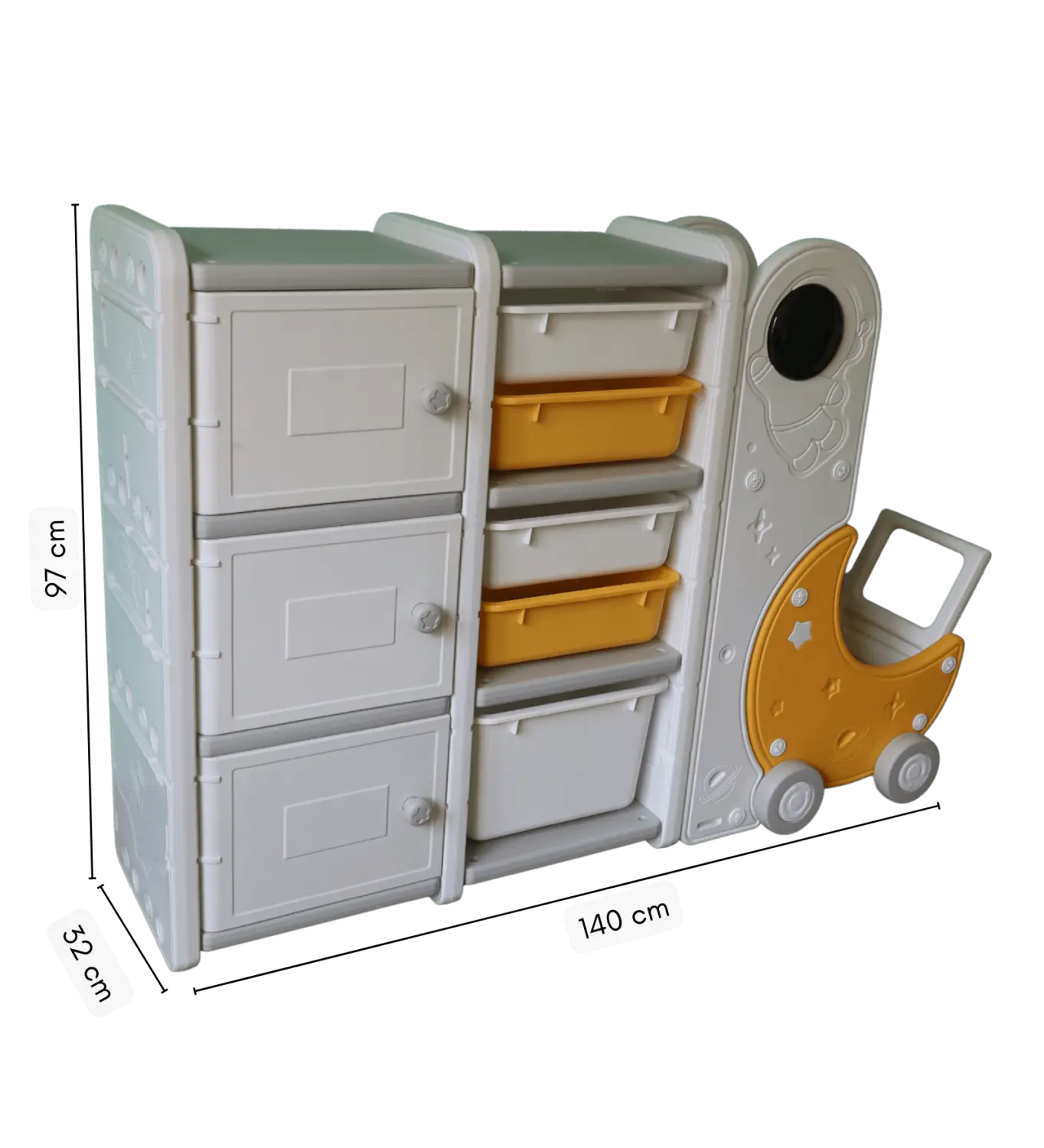
How do I even begin? I don’t want to mess this up.
There’s no wrong way to start. Pick a handful of toys that your child currently loves. Add one or two they haven’t played with in a while. Pack the rest away - under the bed, in a cupboard, or even a suitcase. Then, observe. If your child seems more engaged, you’re on the right track.
Over time, try rotating categories - books, puzzles, building sets, pretend play kits. For example, the FlexDesk works wonderfully here. Its compact storage and large surface make it perfect for rotating sensory play, small world setups, or block building. Everything has a place, and cleanup becomes part of the routine.
What about siblings or different age groups?
It’s absolutely doable. Use color-coded boxes or shelves to separate toys by age or interest. Some toys, like Miniture’s Multi Pikler, work well across ages. Rotate individual items but keep shared ones accessible for longer. Siblings often end up inspiring each other - one child’s “old toy” can become the other’s new discovery.

What does toy rotation actually teach children?
Patience. Focus. Imagination. It helps them explore one idea more deeply rather than rushing from toy to toy. A single set of blocks can become a zoo, a rocket ship, and a castle over the course of the week - and that creativity comes from giving it space and time to grow.
It also reduces clutter, overstimulation, and decision fatigue. And for you as a parent, it brings more peace and less mess.
A little structure, a lot of freedom
With just a bit of planning, your play corner can transform from chaotic to calming. It becomes a zone of independence, a place where your child can lead their own play without needing constant direction.
And when the space is set up with intention - using child-friendly furniture like the FlexDesk, organizing essentials like the space-themed cupboard, or open-ended toys stored in rotation - it doesn’t just work better. It feels better. For them and for you.

So next time your child says, “I’m bored,” take a breath, look around, and remember: a small change in what they see might be all it takes to spark something new.
